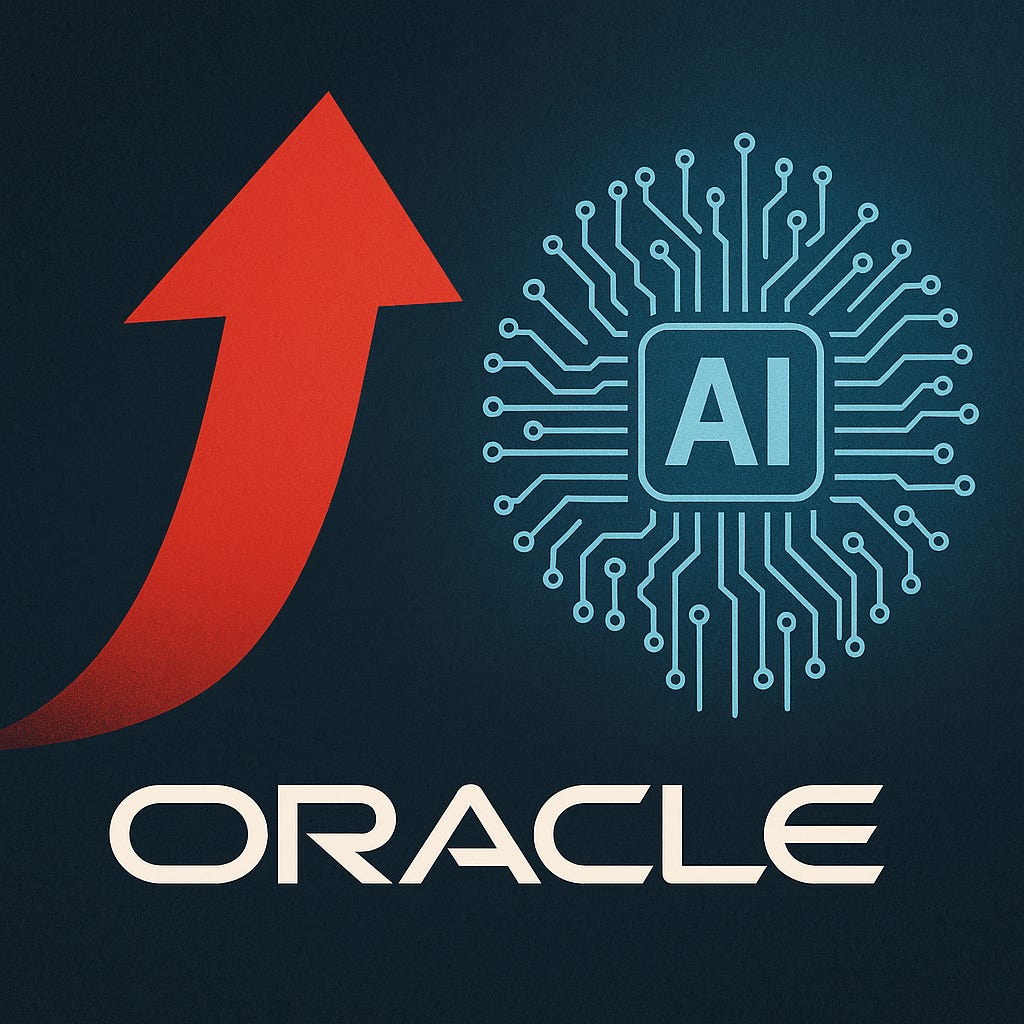The Sequence Radar #719: Oracle’s Quiet AI Decade, Loud Week
Was this email forwarded to you? Sign up here The Sequence Radar #719: Oracle’s Quiet AI Decade, Loud WeekThe tech giant took Wall Street by surprise with an amazing performance driven by its AI computing capabilities.Next Week in The Sequence:
Subscribe Now to Not Miss Anything:📝 Editorial: Oracle’s Quiet AI Decade, Loud WeekOracle just had the kind of AI week that forces a narrative rewrite. Beyond a historic market reaction, the company highlighted a step‑change in AI demand flowing into its contracted backlog and, per multiple reports, is locking in one of the largest multi‑year compute agreements in the industry—reportedly set to kick in mid‑decade. Whatever you thought Oracle was—a “legacy database vendor”—now looks more like an AI infrastructure company with a data‑centric moat. Why has Oracle been underestimated next to Microsoft, Google, Amazon, and Meta? Because it avoided the arms race at the model layer and built the unfashionable substrate instead: data, governance, and distribution. The strategy is pragmatic and, in hindsight, obvious—be the neutral fabric that makes other people’s models safe and useful where enterprise data already lives. This shows up in multicloud reality, not slides: Oracle Database services running natively inside other hyperscalers’ datacenters so LLMs and analytics can co‑locate with regulated data without cross‑cloud contortions. On raw compute, Oracle Cloud Infrastructure (OCI) has been shipping the right primitives for modern AI factories. Supercluster designs pair Blackwell‑class GPU systems (e.g., GB200 NVL72 pods) with high‑bandwidth fabrics, liquid cooling, NVLink for intra‑node communication, and RDMA networking across racks. The result is a platform built for the messy workloads that define the frontier—long‑context training, mixture‑of‑experts sharding, retrieval‑heavy inference, and agentic pipelines that spike bandwidth rather than only FLOPs. The quiet killer feature is the data plane. Oracle Database 23ai brings vector search into the core engine alongside JSON‑relational duality, graph queries, and GoldenGate replication—so semantic and relational queries run side‑by‑side with the same governance, HA/DR, and recovery you already trust. In practical terms, it collapses today’s brittle pattern—export to a separate vector store and hope your policies follow—into a single transactional system. It’s the difference between a demoable RAG stack and a production‑auditable one. Distribution is where this advantage compounds. Dedicated Region, Cloud@Customer, Alloy (partner‑operated clouds), and EU Sovereign Cloud let the same AI stack land in bank vaults, hospitals, and ministries—where the data must live—while bursting to GPU superclusters when scale is needed. Combine that with a first‑class multicloud database footprint and enterprises get a realistic path to adopt training, finetuning, and high‑throughput inference without tearing up their compliance posture. For technical teams, the implications are concrete. Model builders gain another deep pool of cutting‑edge GPUs with modern fabric for massive context and agentic workflows. Data teams can bring LLMs to the data via 23ai rather than spraying sensitive records across third‑party stores. Architects keep true multicloud optionality—databases co‑located where the business runs; models wherever they run best. Oracle has been underestimated precisely because it invested in the unglamorous layers. As AI moves from demos to operations, those layers are where the profit pools—and the production risks—actually live. 🔎 AI ResearchTitle: Defeating Nondeterminism in LLM InferenceAI Lab: Thinking Machines Lab Title: Language Self-Play for Data-Free TrainingAI Lab: Meta Superintelligence Labs, UC Berkeley Title: SimpleQA Verified: A Reliable Factuality Benchmark to Measure Parametric KnowledgeAI Lab: Google DeepMind, Google Research Title: WebExplorer: Explore and Evolve for Training Long-Horizon Web AgentsAI Lab: MiniMax, HKUST, University of Waterloo Title: Paper2Agent: Reimagining Research Papers as Interactive and Reliable AI AgentsAI Lab: Stanford University (Departments of Genetics, Biomedical Data Science, Biology, Computer Science) Title: An AI System to Help Scientists Write Expert-Level Empirical SoftwareAI Lab: Google DeepMind, Google Research, Harvard University, MIT, McGill, Caltech 🤖 AI Tech ReleasesQwen3-ASRAlibaba released Qwen3-ASR, a new speech recognition model built on their multi-modal foundation. ERNIE-4.5-21B-A3B-ThinkingBaidu released the latest iteration of its Baidu models. MCP RegistryThe MCP team open sourced the first version of the MCP Registry, an open catalog of MCP servers and clients. Qwen-NextAnother impressive release by Alibaba, Qwen-Next is a hyper optimal model with training-stability-friendly optimizations, and a multi-token prediction mechanism for faster inference. 📡AI Radar
You’re on the free list for TheSequence Scope and TheSequence Chat. For the full experience, become a paying subscriber to TheSequence Edge. Trusted by thousands of subscribers from the leading AI labs and universities. |
Similar newsletters
There are other similar shared emails that you might be interested in:


